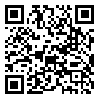
 , Ali Mokhtar1
, Ali Mokhtar1 
 , Nima Baniasad *
, Nima Baniasad * 
 1, Roxana Bahmani2
1, Roxana Bahmani2 
 , Farshid Ghorbani2
, Farshid Ghorbani2 
 , Saeed Sadeghian2
, Saeed Sadeghian2 

2- Private practice.
Introdouction:
According to the importance of enamel discoloration
and controversy regarding the effect of
different orthodontic bonding materials on tooth
discoloration, the aim of this study was to determine
enamel discoloration following orthodontic
brackets using different bonding materials.
Materials and methods: This in-vitro study,
30 recently extracted human premolars with
intact enamel were selected and randomly
divided into three groups after primary color
measurement (T0). In group A, the specimens
were bonded using light-cured adhesive (Transbond
XT); in group B, Transbond plus self-etch
primer was used; and in group C, unite bond
(no-mix) was used on the buccal surface of the
specimens. Lingual surfaces, however, did not
receive any treatment and were considered as
the control group. The samples were immerged
in a solution of tea and coffee. After 1 week, the
second color measurement was performed (T1)
and color changes ΔE between pretreatment
and post immergence state was evaluated. The
third color measurement (T2) was completed
after polishing the surfaces with 24-fluted tungsten
carbide polishing burs and rubber cups, and
color alterations were evaluated between the
base and final state.
Results: Statistical analysis revealed that in all
groups, the enamel color on buccal surfaces had
statistically significant color changes in comparison
with palatal surfaces between the three
stages of treatment (P < 000.1). In groups B and
C, ΔE (T0–T2) was clinically significant (ΔE > 3.3),
and the specimens in group C had the highest
amount of changes in all stages of the treatment.
Conclusion:Bracket bonding on enamel surfaces
with a number of bonding materials in this
study led to detectable enamel discoloration,
which was the highest when using no-mix bonding
material.
Received: 2016/06/17 | Accepted: 2016/06/17 | Published: 2016/06/17
| Rights and permissions | |
 | This work is licensed under a Creative Commons Attribution-NonCommercial 4.0 International License. |

